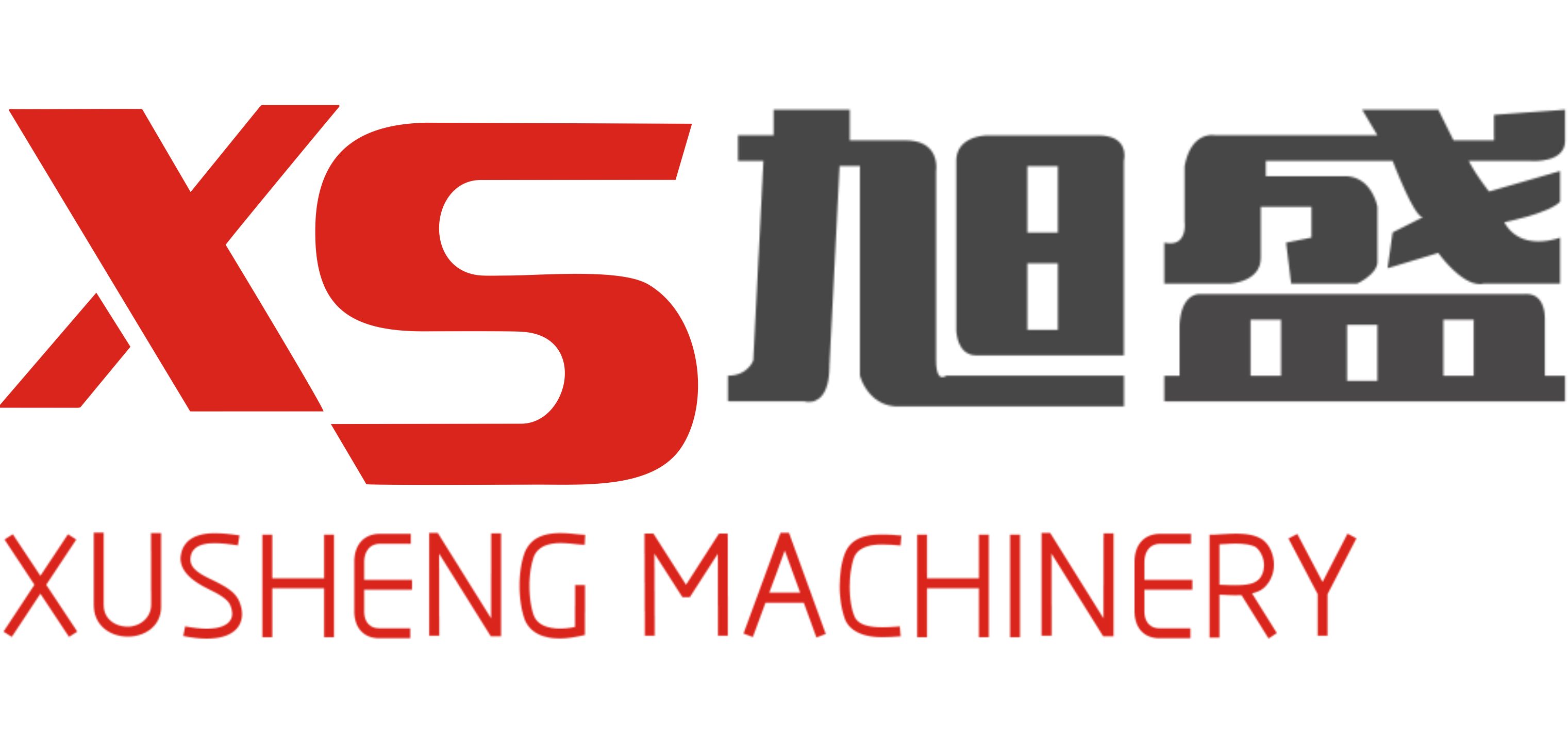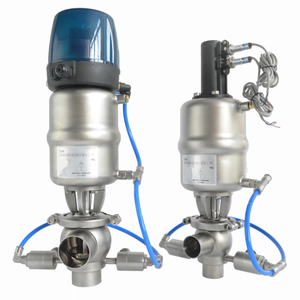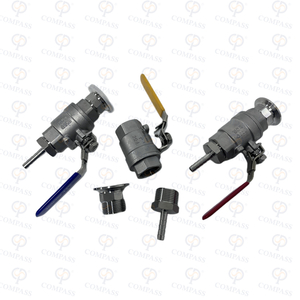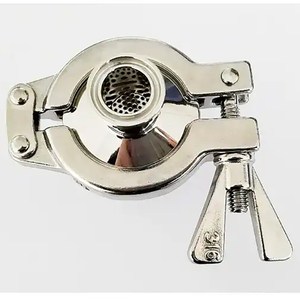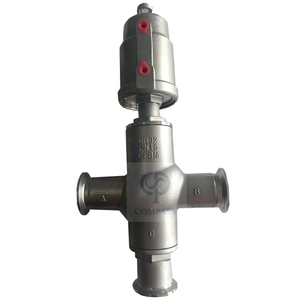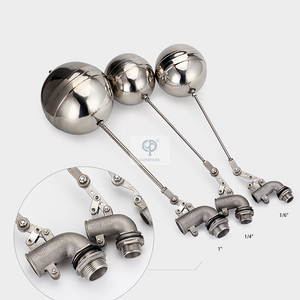In the food and beverage industry, maintaining strict hygiene and safety standards is paramount. With products that directly impact human health, it is essential to ensure that the equipment used in production, processing, and packaging meets the highest sanitary standards. One key piece of equipment that plays a vital role in ensuring cleanliness and product safety is sanitary valves.
Sanitary valves, particularly those made from stainless steel, are designed to handle the specific needs of the food and beverage industries. These valves are engineered to prevent contamination, are easy to clean, and are built to last in environments where regular sanitation is crucial. This article will explore the importance of sanitary valves in the food and beverage industry, focusing on the role of stainless steel valves, their benefits, types, and key factors to consider when choosing the right valve for your application.
What Are Sanitary Valves?
Sanitary valves are specially designed valves used in systems where hygiene is a top priority, such as in food processing, beverage production, and other industries that require sanitary conditions. These valves are used to control the flow of liquids, gases, and slurries in a manner that does not compromise cleanliness or food safety. Unlike traditional valves, sanitary valves are made of smooth, non-corrosive materials like stainless steel and are designed to prevent contamination by minimizing the number of crevices and dead zones where bacteria can grow.
In the food and beverage industry, these valves are used to ensure the safe transfer of ingredients, liquids, and other products without introducing contaminants. They are crucial in maintaining the integrity of the final product, whether it is a beverage, dairy, meat, or baked goods, and comply with strict health and safety regulations.
Types of Sanitary Valves for the Food and Beverage Industry
Sanitary valves come in a variety of types, each serving a specific purpose in food and beverage processing. Here are the most common types used in the industry:
1. Ball Valves
Ball valves are one of the most common types of sanitary valves used in the food and beverage industry. They are designed with a spherical ball inside that controls the flow of liquid. When the valve is open, the hole in the ball aligns with the pipe, allowing fluid to pass through. Ball valves are known for their ability to quickly and effectively shut off the flow of liquids, making them ideal for applications where fast shutoff is essential.
Advantages of Ball Valves:
Quick shutoff capability
Tight sealing to prevent leaks
Long service life due to minimal wear
Applications: Ball valves are typically used for controlling the flow of fluids like milk, juices, or beer in production lines, where quick and reliable shutoff is needed.
2. Butterfly Valves
Butterfly valves use a rotating disc to control the flow of liquid. When the valve is open, the disc is positioned parallel to the pipe, allowing the fluid to flow freely. When the valve is closed, the disc blocks the flow of the liquid. Butterfly valves are particularly popular for large-scale food and beverage production lines due to their compact size, ease of operation, and efficient flow control.
Advantages of Butterfly Valves:
Space-saving design
Lightweight and easy to operate
Suitable for high-flow applications
Applications: Butterfly valves are ideal for applications where space is limited but large volumes of liquid need to be controlled, such as in large brewing facilities or beverage production lines.
3. Check Valves
Check valves are one-way valves that allow liquid to flow in only one direction. This is particularly important in preventing backflow, which could potentially contaminate the product or damage the system. Check valves are essential in maintaining the integrity of the fluid and preventing cross-contamination in food and beverage processing systems.
Advantages of Check Valves:
Prevent backflow and contamination
Simple design with no moving parts in many cases
Reliable and easy to maintain
Applications: Check valves are used in systems that require one-way flow control, such as in piping for filling machines or pasteurization processes.
4. Sampling Valves
Sampling valves are used to extract small samples of liquids for quality control without contaminating the rest of the batch. These valves are critical in ensuring that the product meets the required quality and safety standards before it is packaged or shipped.
Advantages of Sampling Valves:
Provides accurate samples for testing without contamination
Easy to install and operate
Compliant with sanitary standards
Applications: Sampling valves are commonly used in food and beverage laboratories for product testing, ensuring that products like juices, dairy, and sauces meet quality standards.
5. Diaphragm Valves
Diaphragm valves use a flexible diaphragm to control fluid flow. These valves are perfect for isolating fluids from the valve components, preventing contamination. Diaphragm valves are particularly useful in applications involving sanitary or sensitive products, where preventing contamination is a top priority.
Advantages of Diaphragm Valves:
Prevents contamination by isolating the fluid from the valve parts
Smooth flow with minimal turbulence
Easy to clean and maintain
Applications: Diaphragm valves are often used in the dairy, beverage, and pharmaceutical industries, where maintaining product purity is critical.
Key Considerations When Choosing Sanitary Valves for the Food and Beverage Industry
When selecting sanitary valves for food and beverage applications, several factors should be considered to ensure optimal performance and compliance with health and safety standards. Here are some key points to keep in mind:
Valve Material and Corrosion Resistance
Choose valves made from stainless steel, particularly SS304 or SS316, for optimal corrosion resistance, durability, and hygiene. The material should be able to withstand the chemicals, temperatures, and pressures typically encountered in food and beverage production.
Valve Type
Select the right type of valve based on the specific needs of your process. For example, a ball valve might be suitable for rapid shutoff, while a check valve may be necessary to prevent backflow. The choice of valve type will depend on factors such as the nature of the product, required flow control, and space availability.
Size and Flow Requirements
Ensure that the valve size is appropriate for the size of the pipes and the required flow rate. Choosing the right valve size will prevent issues such as excessive pressure drop or inefficient flow control.
Ease of Cleaning
Food and beverage production facilities must adhere to strict cleanliness protocols. Choose valves that are easy to clean and maintain. Stainless steel valves with smooth, crevice-free surfaces are ideal, as they can be cleaned with automated systems (CIP) or manual cleaning processes.
Compliance with Standards
Ensure the valves meet relevant industry standards, such as those set by the FDA, 3A, ISO, or GMP. Compliance with these standards ensures that the valves meet health and safety regulations and are suitable for use in food and beverage applications.
Conclusion
Sanitary valves made from stainless steel are a critical component in the food and beverage industry, ensuring product safety, quality, and hygiene. By choosing the right type of valve, made from high-quality materials like SS304 and SS316, food and beverage manufacturers can maintain strict sanitary conditions while optimizing their processes. Whether you need a ball valve, butterfly valve, check valve, or diaphragm valve, the right sanitary valve will ensure your production line runs smoothly, safely, and efficiently.
If you're looking for high-quality sanitary valves that meet industry standards, XuSheng Machinery Industry Co., Ltd. offers a wide range of stainless steel solutions tailored to the food and beverage sector. With a commitment to quality, durability, and compliance with international standards, XuSheng provides reliable, efficient, and safe valve solutions. Visit XuSheng Machinery Industry Co., Ltd. to learn more about their products and find the perfect valve for your food and beverage manufacturing needs.
